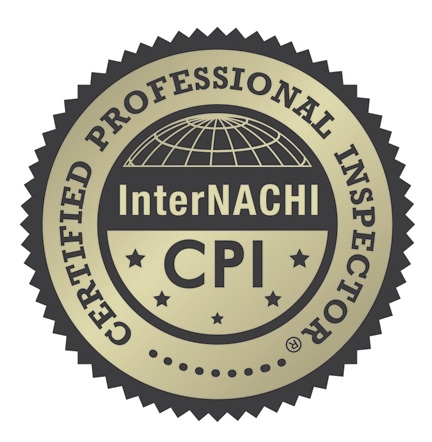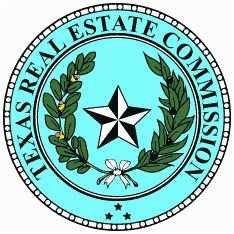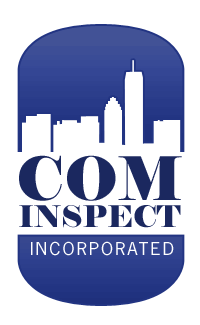JoeKeresztury's blog
Home Safety for the Elderly
Submitted by JoeKeresztury on Sat, 12/28/2013 - 04:33.Safety in your San Antonio area Home for the Elderly
 Specifically, there are 60 deaths per 100,000 persons 65 and older, while there are 20 deaths per 100,000 persons under 65.
Specifically, there are 60 deaths per 100,000 persons 65 and older, while there are 20 deaths per 100,000 persons under 65. In all areas of your home, check all electrical and telephone cords; rugs, runners and mats; telephone areas; smoke detectors; electrical outlets and switches; light bulbs; space heaters; woodburning stoves; and your emergency exit plan.
QUESTION: Are lamp, extension and telephone cords placed outside the flow of traffic?
YES ___ NO ___
RECOMMENDATION: Cords stretched across walkways may cause someone to trip.
- Arrange furniture so that outlets are available for lamps and appliances without the use of extension cords.
- If you must use an extension cord, place it on the floor against a wall where people can not trip over it.
- Move the phone so that telephone cords will not lie where people walk.
YES ___ NO ___
RECOMMENDATION: Furniture resting on cords can damage them, creating fire and shock hazards. Electric cords which run under carpeting may cause a fire.
- Remove cords from under furniture or carpeting.
- Replace damaged and frayed cords.
YES ___ NO ___
Nails and staples can damage cords, presenting fire and shock hazards.
- Remove nails, staples, etc.
- Check wiring for damage.
- Use tape to attach cords to walls or floors.
YES ___ NO ___
RECOMMENDATION: Damaged cords may cause a shock or fire.
- Replace frayed or cracked cords.
YES ___ NO ___
RECOMMENDATION: Overloaded extension cords may cause fires. Standard 18-gauge extension cords can carry 1,250 watts.
- If the rating on the cord is exceeded because of the power requirements of one or more appliances being used on the cord, change the cord to a higher-rated one, or unplug some appliances.
- If an extension cord is needed, use one having a sufficient amp or wattage rating.
QUESTION: Are all small rugs and runners slip-resistant?
YES ___ NO ___
RECOMMENDATION: The CPSC estimates that in 1982, over 2,500 people 65 and over were treated in hospital emergency rooms for injuries that resulted from tripping over rugs and runners. Falls are also the most common cause of fatal injury for older people.
- Remove rugs and runners that tend to slide.
- Apply double-faced adhesive carpet tape or rubber matting to the backs of rugs and runners.
- Purchase rugs with slip-resistant backing.
- Check rugs and mats periodically to see if backing needs to be replaced.
- Place rubber matting under rugs. (Rubber matting that can be cut to size is available.)
- Purchase new rugs with slip-resistant backing.
NOTE: Over time, adhesive on tape can wear away. Rugs with slip- resistant backing also become less effective as they are washed. Periodically, check rugs and mats to see if new tape or backing is needed.
YES ___ NO ___
RECOMMENDATION: In case of emergency, telephone numbers for the police, fire department, and the local poison control center, along with a neighbor's number, should be readily available.
- Write the numbers in large print and tape them to the phone, or place them near the phone where they can be seen easily.
YES ___ NO ___
- Have at least one telephone located where it would be accessible in the event of an accident which leaves you unable to stand.
QUESTION: Are smoke detectors properly located?
RECOMMENDATION: At least one smoke detector should be placed on every floor of your home.
- Read the instructions that come with the smoke detector for advice on the best place to install it.
- Make sure detectors are placed near bedrooms, either on the ceiling or 6 to 12 inches below the ceiling on the wall.
- Locate smoke detectors away from air vents.
YES ___ NO ___
RECOMMENDATION: Many fire injuries and deaths in homes are caused by smoke and toxic gases, rather than the fire itself. Smoke detectors provide an early warning and can wake you in the event of a fire.
- Purchase a smoke detector if you do not have one.
- Check and replace batteries and bulbs according to the manufacturer's instructions.
- Vacuum the grillwork of your smoke detector periodically.
- Replace any smoke detectors which can not be repaired.
NOTE: Some fire departments or local governments will provide assistance in acquiring or installing smoke detectors.
QUESTION: Are any outlets or switches unusually warm or hot to the touch?
RECOMMENDATION: Unusually warm or hot outlets or switches may indicate that an unsafe wiring condition exists.
- Unplug cords from outlets and do not use the switches.
- Have an electrician check the wiring as soon as possible.
RECOMMENDATION: Exposed wiring presents a shock hazard.
- Add a cover plate.
- Replace with a bulb of the correct type and wattage. (If you do not know the correct wattage, use a bulb no larger than 60 watts.)
CHECK SPACE HEATERS
QUESTION: Are heaters which come with a three-prong plug being used in a three-hole outlet or with a properly attached adapter?
YES ___ NO ___
RECOMMENDATION: The grounding feature provided by a three-hole receptacle or an adapter for a two-hole receptacle is a safety feature designed to lessen the risk of shock.
- Never defeat the grounding feature.
- If you do not have a three-hole outlet, use an adapter to connect the heater's three-prong plug. Make sure the adapter, ground wire or tab is attached to the outlet.
QUESTION: Are small stoves and heaters placed where they cannot be knocked over, and away from furnishings and flammable materials, such as curtains and rugs?
- Relocate heaters away from passageways and flammable materials such as curtains, rugs, furniture, etc.
- Review the installation and operating instructions.
- Call your local fire department if you have additional questions.
CHECK WOODBURNING HEATING EQUIPMENT
QUESTION: Is woodburning equipment installed properly?
YES ___ NO ___
RECOMMENDATION: Woodburning stoves should be installed by a qualified person, according to local building codes.
- Local building code officials or fire marshals can provide requirements and recommendations for installation.
NOTE: Some insurance companies will not cover fire losses if wood stoves are not installed according to local codes.
CHECK THE EMERGENCY EXIT PLAN
QUESTION: Do you have an emergency exit plan and an alternate emergency exit plan in case of a fire?
YES ___ NO ___
RECOMMENDATION: Once a fire starts, it spreads rapidly. Since you may not have much time to get out and there may be a lot of confusion, it is important that everyone knows what to do.
- Develop an emergency exit plan.
- Choose a meeting place outside your home so you can be sure that everyone is capable of escape quickly and safely.
- Practice the plan from time to time to make sure everyone is capable of escape quickly and safely.
Remember periodically to re-check your home.
YES ___ NO ___
RECOMMENDATION: Placing or storing non-cooking equipment, such as potholders, dish towels, and plastic utensils on or near the range may result in fires or burns.
- Store flammable and combustible items away from the range and oven.
- Remove any towels hanging on oven handles. If towels hang close to a burner, change the location of the towel rack.
- If necessary, shorten or remove curtains which could brush against heat sources.
YES ___ NO ___
RECOMMENDATION: The CPSC estimates that 70% of all people who die from clothing fires are over 65 years of age. Long sleeves are more likely to catch fire than are short sleeves. Long sleeves are also more apt to catch on pot handles, overturning pots and pans and causing scalds.
- Roll back long, loose sleeves or fasten them with pins or elastic bands while you are cooking.
YES ___ NO ___
RECOMMENDATION: Indoor air pollutants may accumulate to unhealthful levels in a kitchen where gas or kerosene-fire appliances are in use.
- Use ventilation systems or open windows to clear air of vapors and smoke.
YES ___ NO ___
RECOMMENDATION: Electrical appliances and power cords can cause shock or electrocution if they come in contact with water. Cords can also be damaged by excess heat.
- Move cords and appliances away from sink areas and hot surfaces.
- Move appliances closer to wall outlets or to different outlets so you won't need extension cords.
- If extension cords must be used, install wiring guides so that cords will not hang near sink, range, or working areas.
- Consider adding new outlets for convenience and safety; ask your electrician to install outlets equipped with ground-fault circuit interrupters (GFCIs) to protect against electric shock. A GFCI is a shock-protection device that will detect electrical fault and shut off electricity before serious injury or death occurs.
YES ___ NO ___
RECOMMENDATION: Low lighting and glare can contribute to burns and cuts. Improve lighting by:
- opening curtains and blinds (unless this causes too much glare).
- using the maximum-wattage bulb allowed by the fixture. (If you do not know the correct wattage for the fixture, use a bulb no larger than 60 watts.)
- reducing glare by using frosted bulbs, indirect lighting, shades and globes on light fixtures, and partially closing the blinds or curtains.
- installing additional light fixtures under cabinets and over the countertop.
YES ___ NO ___
RECOMMENDATION: Standing on chairs, boxes or other makeshift items to reach high shelves can result in falls. The CPSC estimates that in 1982, 1,500 people over 65 were treated in hospital emergency rooms when they fell from chairs on which they were standing.
- If you don't have a step stool, consider buying one. Choose one with a handrail that you can hold onto while standing on the top step.
- Before climbing on any step stool, make sure it is fully opened and stable.
- Tighten screws and braces on the step stool.
- Discard step stools with broken parts.
LIVING ROOM/FAMILY ROOM
QUESTION: Are chimneys clear from accumulations of leaves, and other debris that can clog them?
YES ___ NO ___
RECOMMENDATION: A clogged chimney can cause a poorly-burning fire to result in poisonous fumes and smoke coming back into the house.
- Do not use the chimney until the blockage has been removed.
- Have the chimney checked and cleaned by a registered or licensed professional.
YES ___ NO ___
RECOMMENDATION: Burning wood can cause a build up of creosote inside the chimney. This tar-like material can ignite and result in a serious chimney fire.
- Have the chimney checked and cleaned by a registered or licensed professional.
CHECK THE TELEPHONE AREA
CHECK PASSAGEWAYS
YES ___ NO ___
RECOMMENDATION: Shadowed or dark areas can hide tripping hazards.
- Use the maximum wattage bulb allowed by the fixture. (If you do not know the correct wattage, use a bulb no larger than 60 watts.)
- Install night lights.
- Reduce glare by using frosted bulbs, indirect lighting, shades and globes on light fixtures, and by partially closing blinds and curtains.
- Consider using additional lamps or light fixtures. Make sure that the bulbs you use are the right type and wattage for the light fixture.
YES ___ NO ___
RECOMMENDATION: Furniture, boxes and other items could be an obstruction or tripping hazard, especially in the event of an emergency or fire.
- Rearrange furniture to open passageways and walkways.
- Remove boxes and clutter.
YES ___ NO ___
RECOMMENDATION: Wet, soapy tile and porcelain surfaces are especially slippery and may contribute to falls.
- Apply textured strips or appliques on the floors of tubs and showers.
- Use non-skid mats in the tub and shower, and on the bathroom floor.
YES ___ NO ___
RECOMMENDATION: Grab bars can help you get into and out of your tub or shower, and can help prevent falls.
- Check existing bars for strength and stability, and repair, if necessary.
- Attach grab bars, through the tile, to structural supports in the wall, or install bars specifically designed to attach to the sides of the bathtub. If you are not sure how it is done, get someone who is qualified to assist you.
YES ___ NO ___
RECOMMENDATION: Water temperature above 120 degrees F can cause tap water scalds.
- Lower the setting on your hot water heater to "low" or 120 degrees. If you are unfamiliar with the controls of your water heater, ask a qualified person to adjust it for you. If your hot water system is controlled by the landlord, ask the landlord to consider lowering the setting.
- Always check water temperature by hand before entering bath or shower.
- Taking baths, rather than showers, reduces the risk of a scald from suddenly changing water temperatures.
YES ___ NO ___
RECOMMENDATIONS: A light switch near the door will prevent you from walking through a dark area.
- Install a night light. Inexpensive lights that plug into outlets are available.
- Consider replacing the existing switch with a "glow switch" that can be seen in the dark.
YES ___ NO ___
RECOMMENDATION: Even an appliance that is not turned on, such as a hair dryer, can be potentially hazardous if it is left plugged in. If it falls into water in a sink or bathtub while plugged in, it could cause a lethal shock.
- Unplug all small appliances when not in use.
- Never reach into water to retrieve an appliance that has fallen in without being sure the appliance is unplugged.
- Install a ground-fault circuit interrupter (GFCI) in your bathroom outlet to protect against electric shock.
YES ___ NO ___
RECOMMENDATION: Medications that are not clearly and accurately labeled can be easily mixed up. Taking the wrong medicine, or missing a dosage of medicine you need, can be dangerous.
- Be sure that all containers are clearly marked with the contents, doctor's instructions, expiration date, and patient's name.
- Dispose of outdated medicines properly.
- Request non-child-resistant closures from your pharmacist only when you cannot use child-resistant closures.
Remember: Check all of the product areas mentioned at the beginning of the checklist.
YES ___ NO ___
RECOMMENDATION: Lamps or switches located close to each bed will enable people getting up at night to see where they are going.
- Rearrange furniture closer to switches, or move lamps closer to beds.
- Install night lights.
YES ___ NO ___
RECOMMENDATION: Burns are a leading cause of accidental death among seniors. Smoking in bed is a major contributor to this problem. Among mattress and bedding fire-related deaths in a recent year, 42% were to persons 65 or older.
- Remove sources of heatandflame from areas around beds.
- Don't smoke in bed.
YES ___ NO ___
RECOMMENDATION: Tucking in electric blankets, or placing additional coverings on top of them can cause excessive heat buildup which can start a fire.
RECOMMENDATION:
- Use electric blankets according to the manufacturer's instructions.
- Don't allow anything to be on top of the blanket while it is in use. This includes other blankets or comforters, and even pets sleeping on top of the blanket.
- Don't set electric blankets so high that they could burn someone who falls asleep while they are on.
YES ___ NO ___
RECOMMENDATION: Never go to sleep with a heating pad if it is turned on because it can cause serious burns, even at relatively low settings.
YES ___ NO ___
RECOMMENDATION: In case of an emergency, it is important to be able to reach the telephone without getting out of bed.
Remember: Check all of the product areas mentioned at the beginning of the checklist.
BASEMENT/GARAGE/WORKSHOP/STORAGE AREAS
YES ___ NO ___
RECOMMENDATION: Power tools were involved in more 5,200 injuries treated in hospital emergency rooms to people 65 and over in 1982. Three-fourths of these were finger injuries. Good lighting can reduce the chance that you will accidentally cut your finger.
- Either install additional light, or avoid working with power tools in the area.
YES ___ NO ___
RECOMMENDATION: Basements, garages and storage areas can contain many tripping hazards and sharp and pointed tools that can make a fall even more hazardous.
- Keep an operating flashlight handy.
- Have an electrician install switches at each entrance to a dark area.
CHECK THE FUSE BOX OR CIRCUIT BREAKERS
- Be certain that correct-size fuses are used. (If you do not know the correct sizes, consider having an electrician identify and label the sizes to be used.)
YES ___ NO ___
RECOMMENDATION: These safety features reduce the risk of an electric shock.
- Use a properly connected three-prong adapter for connecting a three-prong plug to a two-hole receptacle.
- Consider replacing old tools that have neither a three-prong plug nor are double-insulated.
YES ___ NO ___
RECOMMENDATION: Power tools used with guards removed pose a serious risk of injury from sharp edges and moving parts.
- Replace guards that have been removed from power tools.
YES ___ NO ___
RECOMMENDATION: Improperly grounded appliances can lead to electric shock.
- Check with your service person or an electrician if you are in doubt.
YES ___ NO ___
RECOMMENDATION: If not tightly closed, vapors may escape that may be toxic when inhaled.
- Check containers periodically to make sure they are tightly closed.
YES ___ NO ___
RECOMMENDATION: Gasoline, kerosene and other flammable liquids should be stored out of living areas in properly labeled, non-glass safety containers.
- Remove these products from the areas near heat and flame such as heaters, furnaces, water heaters, ranges, and other gas appliances.
QUESTION: Are stairs well lit?
YES ___ NO ___
RECOMMENDATION: Stairs should be lighted so that each step, particularly the step edges, can be clearly seen while going up and down stairs. The lighting should not produce glare or shadows along the stairway.
- Use the maximum-wattage bulb allowed by the light fixture. (If you do not know the correct wattage, use a bulb no larger than 60 watts.)
- Reduce glare by using frosted bulbs, indirect lighting, shades and globes on light fixtures, and by partially closing blinds and curtains.
- Have a qualified person add additional light fixtures. Make sure that the bulbs you use are the right type and wattage for the light fixture.
- If no other light is available, keep an operating flashlight in a convenient location at the top and bottom of the stairs.
- Install night lights at nearby outlets.
- Consider installing switches at the top and bottom of the stairs.
YES ___ NO ___
RECOMMENDATION: Worn treads and worn and loose carpeting can lead to insecure footing, resulting in slips and falls.
- Try to avoid wearing only socks or smooth-soled shoes or slippers when using stairs.
- Make certain the carpet is firmly attached to the steps all along the stairs.
- Consider refinishing or replacing worn treads, or replacing worn carpeting.
- Paint outside steps with paint that has a rough texture, or use abrasive strips.
YES ___ NO ___
RECOMMENDATION: Even a small difference in step surfaces or riser heights can lead to falls.
- Mark any steps which are especially narrow or have risers that are higher or lower than the others. Be especially careful of these steps when using the stairs.
YES ___ NO ___
RECOMMENDATION: Worn and torn coverings and nails sticking out from coverings could snag your foot and cause you to trip.
- Repair coverings.
- Remove coverings.
- Replace coverings.
YES ___ NO ___
RECOMMENDATION: Falls may occur if the edges of the steps are blurred or hard to see.
- Paint edges of outdoor steps white to see them better at night.
- Add extra lighting.
- If you plan to carpet your stairs, avoid deep-pile carpeting, and patterned and dark-colored carpeting that can make it difficult to see the edges of the steps clearly.
YES ___ NO ___
RECOMMENDATION: People can trip over objects left on stairs, particularly in the event of an emergency or fire.
- Remove all objects from the stairway.
- Joe Keresztury, CPI is a member of InterNachi.




















